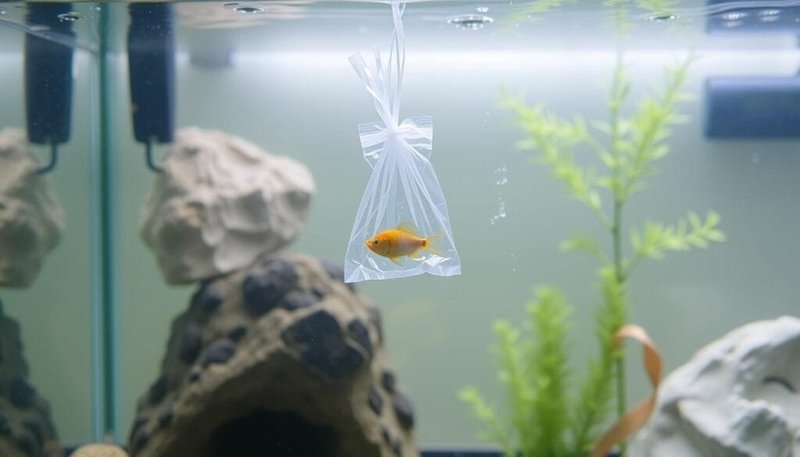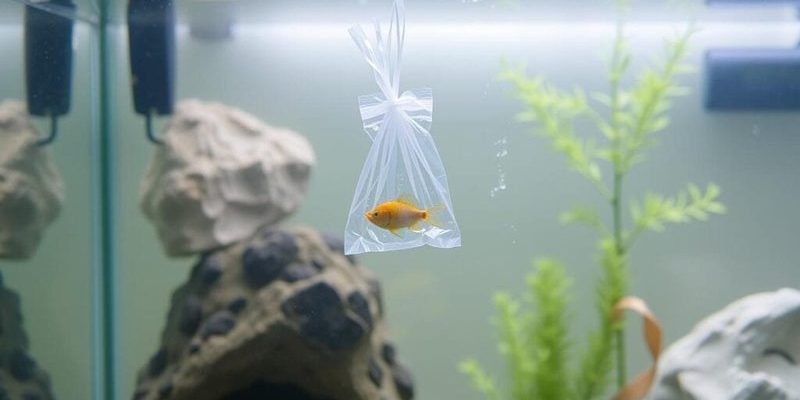
Acclimating a hawkfish involves more than just plopping it into your tank. It’s a process that requires patience and a bit of knowledge. The good news is that if you follow the right steps, you can create a smooth transition for your new aquatic buddy. Let’s dive deeper into how to acclimate a new hawkfish effectively and ensure it thrives in your aquarium.
Understanding Your Hawkfish’s Needs
Before you even think about bringing your new hawkfish home, it’s good to know a little about the species. Hawkfish are known for their distinctive body shapes and vibrant colors, often exhibiting a curious and bold demeanor. They typically thrive in reef environments, which means they enjoy a well-structured tank with plenty of hiding spots and open spaces to swim.
Water Conditions Matter: Hawkfish are sensitive to water quality, so ensuring that your aquarium’s salinity, temperature, and pH levels are in the ideal range is vital. The temperature should generally be between 72°F and 78°F, with a salinity of about 1.020 to 1.025. Familiarizing yourself with these factors will help you create a comfortable environment right from the start.
You might also be wondering about compatibility. Hawkfish can be territorial, which means introducing them into a community tank needs careful planning. It’s best to research and ensure that your tank mates are compatible with your new hawkfish. This knowledge will save you from future headaches.
Preparing Your Aquarium for Acclimation
Setting the stage for your hawkfish’s arrival involves a bit of preparation. Here’s what you need to do:
1. Check Water Parameters: Test your tank’s water quality. It should be stable and match the parameters of the water in which your hawkfish has been living. You want to avoid shocking it with big changes.
2. Create Hiding Spots: Since hawkfish can be a bit shy initially, adding rocks or corals for them to hide behind will help them feel secure when they first enter your tank. A happy hawkfish is a more vibrant hawkfish!
3. Minimize Stress: Keep the environment around the tank calm. Loud noises and a lot of activity can stress out a new fish. If possible, dim the lights a bit until your hawkfish settles in.
Preparing your aquarium not only helps your hawkfish acclimate better but also ensures a healthier environment for all your fish.
The Acclimation Process
Now that your tank is ready, it’s time to bring your hawkfish home and begin the acclimation process. Here’s how to do it step-by-step:
1. Float the Bag: When you arrive home, keep your hawkfish in the bag from the store. This helps to equalize the water temperature in the bag with that of your tank. Simply float the sealed bag in your aquarium for about 15-20 minutes.
2. Mix It Up: After the temperature is equalized, open the bag and gradually introduce some aquarium water into it. You can do this by pouring a small cup of tank water into the bag every 5 minutes. This helps the fish adjust to the new water chemistry.
3. Release the Fish: Once you’ve mixed in enough tank water (wait about 30 minutes), it’s time to release your hawkfish. Use a net to carefully transfer it into the tank instead of pouring it in with the old water. This prevents any unwanted substances from entering your aquarium.
This process may sound straightforward, but taking your time ensures that your hawkfish is less likely to experience shock and will settle in smoothly.
Post-Acclimation Care
After you’ve officially welcomed your hawkfish into its new home, the next step is to provide some post-acclimation care. Here’s what to keep in mind:
– Monitor Behavior: Keep an eye on your hawkfish during the first few days. It’s normal for it to hide or be a bit shy initially. If you notice it hiding excessively or showing signs of distress like erratic swimming, it might indicate that something is off with the water conditions or tank mates.
– Check Water Quality Regularly: After introducing a new fish, it’s good practice to perform water tests regularly. This ensures that everything remains stable during the adjustment period.
– Feed Wisely: Once your hawkfish seems comfortable, introduce it to its diet. Hawkfish are carnivorous, so be sure to provide high-quality pellets, frozen or live food. Just don’t overwhelm it with too much food at once—it’s best to start small.
Taking these post-acclimation steps seriously will help your hawkfish adapt and thrive in its new environment, ensuring it stays vibrant and healthy for years to come.
Common Issues and Troubleshooting
Even with careful acclimation, you might encounter a few bumps in the road. Here are some common issues and how to handle them:
1. Stress and Hiding: If your hawkfish seems overly stressed, double-check your water parameters. Sometimes, minor fluctuations can affect fish behavior significantly.
2. Aggression: If you have a community tank, a new hawkfish might show territorial behavior. Make sure there are enough hiding spots and that other fish aren’t overly aggressive.
3. Loss of Appetite: If your hawkfish refuses to eat after acclimation, don’t panic. Allow it a few days to settle in before trying other food options that might entice it.
These common issues are often temporary and can usually be resolved with a little patience and observation. Your goal is to create a thriving environment where your hawkfish feels safe and at home.
Acclimating a new hawkfish to your aquarium might seem daunting at first, but with the right steps, it can be a smooth and rewarding experience. Remember, the key is to take your time and create a welcoming atmosphere. Once settled in, your hawkfish will not only brighten your aquarium but also bring a unique personality that enriches your aquatic space.
So, as you prepare for your new little buddy, approach the acclimation process with care and attention. By doing so, you’re more than likely to enjoy a happy, healthy hawkfish swimming joyfully in its new underwater home!

